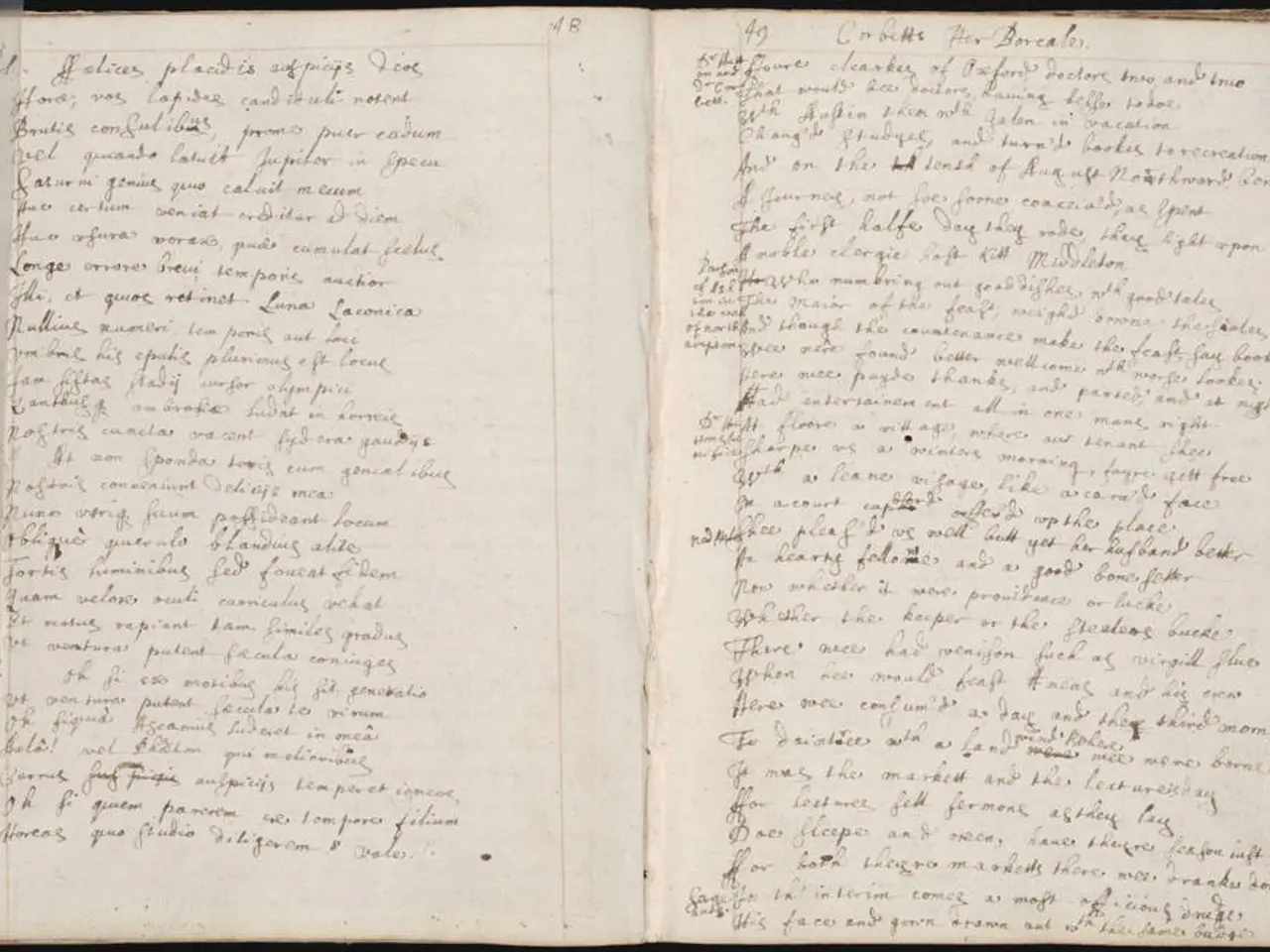Guide in Composing Tunes: Theory and Practicality in Melody Writing
In the realm of music, melodies hold a unique power to captivate listeners and leave lasting impressions. This article delves into the techniques and tips used by both classical and modern composers to create memorable melodies, as we explore Western Tonal Classical music and modern popular songs.
A memorable melody does not necessitate complexity; instead, it relies on a few well-chosen notes that work together harmoniously and clearly. Simplicity, as it turns out, can be the key to a catchy and focused melody. Overloading a melody with too many notes might confuse listeners and reduce its memorability [1].
One of the strategies for creating a memorable melody is the use of predictable movements and repetition. The human brain is wired to recognize patterns, and by repeating melodic phrases with subtle variations, we can embed melodies in memory. This balance of repetition and change keeps a melody engaging without losing the listener [1][2].
Melodies often progress mostly by step (moving to adjacent scale notes) but incorporate one unexpected jump (such as an interval of a fourth or sixth) to add emotional lift and catchiness [2]. Harmonic support is also crucial, as writing melodies that mostly stay within the notes of the underlying chords provides a sense of coherence. Occasionally stepping outside chord tones for expressive effect is acceptable, but the melody should generally respect the chord tones to sound stable and pleasant [3][5].
Experimenting with chord variations can enrich the harmonic backdrop and inspire more interesting melodies. Adding chord extensions like suspensions (sus2) or added notes (add9) can provide a richer harmonic landscape [1][5]. Arpeggiating chords or strumming them naturally helps give a human feel and flow to the melody.
Emotional storytelling through dynamics and tempo is another essential element of a memorable melody. Using dynamics (soft/loud, crescendo/decrescendo) and tempo changes (ritardando, accelerando) shapes the emotional journey of a melody. Accents on key notes can highlight narrative moments within the music, connecting the melody to a story or feeling [4].
Practical songwriting exercises can help composers hone their skills. Some classical and modern composers recommend improvising over a chord loop, learning mode scales (Dorian, Mixolydian), writing the chorus first for a strong hook, and daily practice of transcribing melodies by ear to internalize melodic phrasing [2].
In songs, aligning the rhythm of a melody with the natural rhythm of the words makes the melody sound fluid and expressive. This technique is often used in blues and pop music to enhance memorability [3].
To summarise, memorable melodies balance simplicity, emotional expressiveness, harmonic support, and pattern recognition. Composers achieve this through structured repetition with variation, stepwise movement with impactful leaps, and dynamic emotional shaping that guides the listener through a musical narrative [1][2][3][4][5].
The objective when writing a melody is to create a journey that captures the listener's attention by offering variety within unity. Three contributing factors for a memorable melody are melodic contour, rhythm, and harmony. The study of how to write a melody is a vast ground to undertake, considering historical, aesthetic, and technical considerations [6].
The Bach passacaglia and Fugue BWV 582 is an example of a melody with an ostinato or drone, a short melody that repeats itself throughout the piece and serves as the fugue's main subject [7]. The melody contains much more than the naked eye can see at first glance, and for a balanced melody to exist, all the contributing elements should be combined in perfect harmony.
Some notes within a melody are perceived as more important than others, such as the highest or lowest notes, the first and last notes, longer notes, repeated notes, notes in a strong metric position, accented notes, harmonic notes, and notes in a step progression [8].
The melody is a ubiquitous form of musical structure that engages the emotional part of the listener's brain. The challenge for a composer is to create a memorable melody or combination of melodies that tap into the listener's unconscious and recall past experiences [9].
The famous "Amazing Grace" is a Christian hymn composed on a Major pentatonic scale, which contributes to the arousal of an unstable interval: the tritone. The first two bars mark the nature of what the rest of the melody will be, with an upbeat from the fifth degree of the scale to the tonic note [10].
In conclusion, the art of composing a memorable melody is a complex and fascinating journey, requiring a deep understanding of pitch, rhythm, and harmony. This article aims to raise awareness about the inner complexity of writing melodies, regardless of the reader's level of composition expertise.
- By employing simple, well-chosen notes that work together harmoniously, composers can create memorable melodies that stick in listeners' minds [1].
- Composers can enhance the emotional impact of a melody through dynamic changes (soft/loud and crescendo/decrescendo), as well as the use of patterns, predictable movements, and repetition [1][2].








